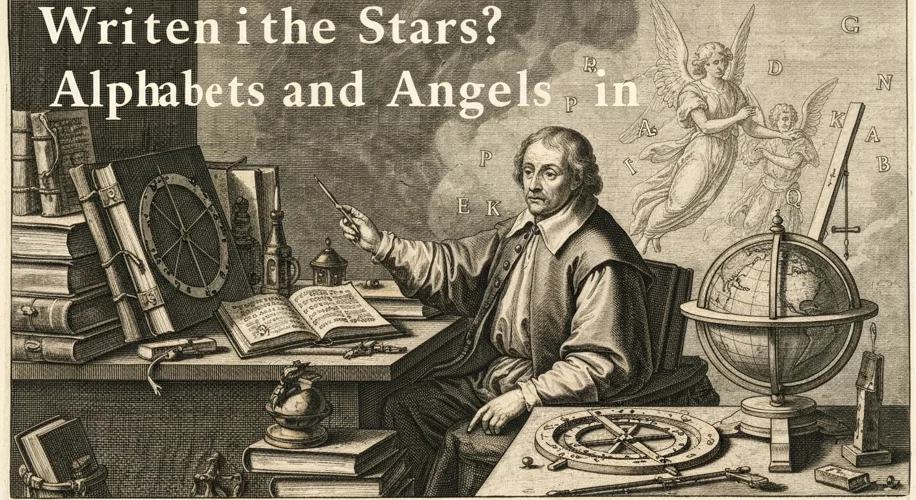Now, imagine: Europe, as the Middle Ages bled into the Renaissance. The air thrummed with a peculiar blend of intellectual awakening and deep-seated faith. In this fertile ground, where ancient texts were rediscovered and the heavens were scrutinized with renewed vigor, a fascinating connection began to emerge between the very building blocks of our language – the alphabet – and the celestial realm, often interpreted through the lens of angelic beings.
For centuries, the alphabet had been more than just a tool for communication. It was imbued with a mystical significance. The very shapes of letters, their order, their sounds, were thought to hold cosmic secrets. Early modern thinkers, inheriting a rich tradition of esotericism, saw patterns everywhere. The meticulous observation of the night sky, driven by a desire to understand God’s creation and navigate the seas, also fueled this search for hidden meaning. The predictable dance of the planets, the unfathomable expanse of the stars, all seemed to whisper divine truths.
Key figures in this intellectual milieu, though often working in different spheres, shared this underlying belief in a divinely ordered universe, where language and the cosmos were interconnected. Astrologers, like Johannes Kepler (who, famously, was also a mathematician and physicist), meticulously charted the stars, not just for prediction, but to discern the divine harmony. Alchemists sought to understand the transmutation of matter, often seeing parallels in spiritual transformation, and the written word was a crucial component in their coded texts.
Meanwhile, the Christian tradition itself was rich with angelic hierarchies and a belief in celestial messengers. Angels were seen as intermediaries between the divine and the human, and their very existence was tied to the divine order. It wasn’t a giant leap for some to connect the fundamental elements of human language – the letters – with these celestial intelligences. Could it be that the alphabet itself was divinely revealed, perhaps even whispered by angels? The very act of writing, of giving form to thought, could be seen as a sacred endeavor, a reflection of the divine act of creation.

Consider the work of scholars like Heinrich Cornelius Agrippa, whose “Three Books of Occult Philosophy” explored the magical properties of letters and their supposed celestial correspondences. Agrippa, a prominent figure of the era, delved into the idea that language, particularly the alphabet, was not arbitrary but a divine gift, with each letter possessing its own unique power and connection to the angelic or spiritual realms. This wasn’t fringe thinking; it was part of a broader intellectual current that sought to reconcile faith with reason, the seen with the unseen.
The development of printing, a technological revolution of the time, also played a role. Suddenly, texts, including those dealing with these esoteric ideas, could be disseminated more widely. The printed alphabet, standardized and reproducible, became a powerful symbol. Was the proliferation of written knowledge a sign of divine favor, a way for humanity to better understand the celestial order through the very letters that formed the words of scripture and ancient wisdom?
The consequences of this intersection were profound. It fostered a worldview where empirical observation (astronomy) and spiritual interpretation (angelic connections to letters) were not seen as opposing forces, but as complementary paths to truth. This perspective influenced art, literature, and even the way people understood their own place in the universe. The familiar alphabet, when viewed through this lens, transformed from a mere linguistic tool into a potential key to unlocking cosmic mysteries and communing with the divine.
Ultimately, the early modern fascination with the link between alphabets and angels reveals a culture grappling with new knowledge while holding fast to its spiritual foundations. It reminds us that the quest for understanding – whether through charting the stars, deciphering ancient languages, or contemplating the nature of angels – is a deeply human endeavor, often weaving together threads of science, religion, and the very essence of communication. Little did those scholars know that the letters they meticulously studied were paving the way for the scientific and linguistic revolutions that would, in time, reshape the world in ways they could scarcely imagine.

